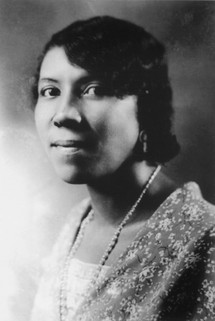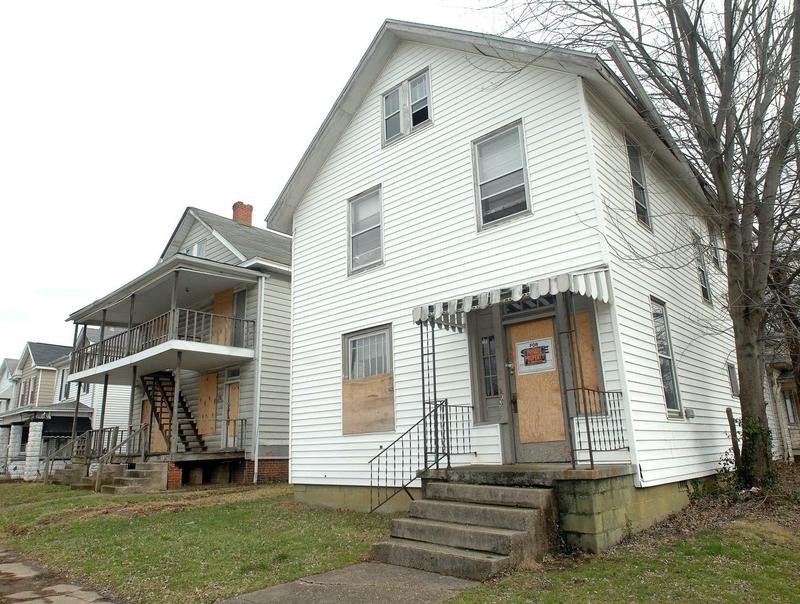Memphis Tennessee Garrison House
Introduction
Author-Uploaded Audio
00:00 / 00:00
Listen to a narration of this entry's description by Clio Admin.
Text-to-speech Audio
This small frame house was home to Memphis Tennessee Garrison, a leader in the African American community who served as one of the vice presidents of the NAACP. Garrison spent the majority of her life living in rural Appalachia. After teaching in a one-room school in Gary, West Virginia, she retired to Huntington. She worked to secure resources for schools, supported local civil rights initiatives, and became a vice president of the NAACP. Garrison lived at this home from the 1950s until the 1980s. During those years, she opened her home to many in the community. She also used the home to host numerous meetings where leaders of the African American community came together to discuss their challenges and propose solutions. The house was listed on the National Register of Historic Places in January 2017 and is being preserved by community leaders who hope to turn the home into a community museum.
Images
Memphis Tennessee Garrison

Home and its current condition as of 2008

Backstory and Context
Author-Uploaded Audio
00:00 / 00:00
Listen to a narration of this entry's description by Clio Admin.
Text-to-speech Audio
Memphis Tennessee Carter was born in Hollins, Virginia, in March 1890 and was the daughter of enslaved persons. Her family moved to Gary, West Virginia, before her eighth birthday and Carter grew up in the southern West Virginia coalfields. Her mother washed laundry, cleaned houses, and watched children and her brother worked in the mines. She attended grade school in a one-room schoolhouse. In the evenings, she taught her mother and brother how to read and write. She moved to Ohio to continue her education as there were no high schools in the area that admitted African Americans at the time. She graduated from high school in 1908 and returned to southern West Virginia to work as a teacher. She obtained a BA from Bluefield State College and continued to further her education at Ohio University in Athens, Ohio.
In 1918, Memphis Tennessee Carter married William Garrison and changed her name to Memphis Tennessee Garrison. They couple never had children.
During a time when women were less likely to afforded the opportunity to fill leadership roles, Garrison stepped into the role as one her community's leading advocates. While living in McDowell County, West Virginia, which was home to one of the richest coalfields in the United States and home to U.S. Steel, Garrison arbitrated labor and race issues between the community and the coal bosses. From 1931 to 1946, Garrison worked as a mediator and welfare worker for U.S. Steel. She also worked to provide recreational opportunities for the local African American community and organized a pool, park, and entertainment. She left the company after the United Mine Workers’ of America organized the U.S. Steel. Once, the miners began to form unions, Garrison’s role in the company became more informal as the union took on many of the roles and responsibilities for representing mine families that had once belonged to Garrison. During this same time, she was becoming more committed to the NAACP and efforts that were taking place outside of her hometown of Gary, West Virginia.
Garrison began teaching in 1908 and did not retire until the 1950s. During the Great Depression, she made sure her students were fed. Garrison understood that students could not learn adequately on an empty stomach. She also took education outside the school walls and educated the coalfield community. Garrison brought explorers, plays, and music to Gary exposing the community to different types of culture.
Garrison’s commitment to her students and the young Black population is what inspired her to organize. She was able to create an agenda that motivated both men and women, Black and white. When the Black teachers of West Virginia were organized into the West Virginia State Teachers’ Association, Garrison was the first woman to be elected as the organization's president (1929-1930) and also served as chairman of the board. In 1931, she was elected vice president of the American Teachers' Association.
In 1918, she heard about the NAACP, and by 1921, she had established a branch in Gary. Soon after, she started the Christmas seal fundraiser for the Gary branch. The fundraiser was so successful that it was soon adopted by the national office and became one of the NAACP’s most important fundraisers. She also helped establish branches in other towns in southern West Virginia, assisted in forming the State NAACP Conference, and served as the state treasurer for two years. She often traveled on behalf of the NAACP to solve disputes, establish new branches, and implement membership drives and scholarships. From 1956-1959, she was the NAACP National Field Secretary. Garrison also served as the national vice president of the NAACP Board of Directors from 1964 to 1966.
She was also involved in politics. She supported school desegregation before Brown v. Brown and worked to enforce integration after the Supreme Court case. In addition, she campaigned for voting reform. In 1944, she spoke to the U.S. Senate regarding need to abolish poll taxes. She served as the Chairperson of the Colored Women’s Division of the Republican Party and was a member of the Woman Advisory Committee for Colored Voters. Between 1963 and 1966, she was a member of the West Virginia Human Rights Commission. Demonstrating how she and many other African Americans shifted parties during a time of political realignment, in 1964 Garrison was a member of President Johnson’s National Citizens Committee on Community Relations.
In 1952, Garrison moved to Huntington, West Virginia and soon after helped to establish a Black Girl Scout troop in the city. While in Huntington, she inspired a new generation of Black youth. She also worked as a substitute teacher, continued to serve in local, state, and national NAACP positions, and remained active in civic issues.
Memphis Tennessee Garrison died on July 25, 1988 at the age of ninety-eight in Huntington, West Virginia.
Throughout her life, she was honored for the work she did for the Black community and civil rights. In 1929, Garrison received the NAACP’s Madam C. J. Walker Gold Medal Award. Her achievements in and services to the civil rights movement were honored in 1959 when she was the recipient of the T. G. Nutter Award. In 1969, she received the Distinguished Service Award from the NAACP. Marshall University in Huntington, West Virginia provided Garrison with an honorary Doctor of Humanities degree in 1970. She also was given the governor’s “Living the Dream” Award in 1988. Today, Garrison's home is owned and maintained by local citizens with the goal of converting the home into a community museum.
Cite This Entry
Marshall University Libraries et. al. "Memphis Tennessee Garrison House." Clio: Your Guide to History. January 20, 2022. Accessed March 29, 2025. https://theclio.com/entry/26512
Sources
Ewen, Lynda Ann, and Ancella R. Bickley. Memphis Tennessee Garrison the Remarkable Story of a Black Appalachian Woman. Athens: Ohio UP, 2001. Print.
West, Amanda. National Register of Historic Places Nomination Form. "The Memphis Tennessee Garrison House." July 30, 2016.
.Courtesy of Ohio University Press, publishers of Ancella R. Bickley & Lynda Ann Ewen, eds., "Memphis Tennessee Garrison: The Remarkable Story of a Black Appalachian Woman" (Athens, 2001)
Herald-Dispatch of Huntington

